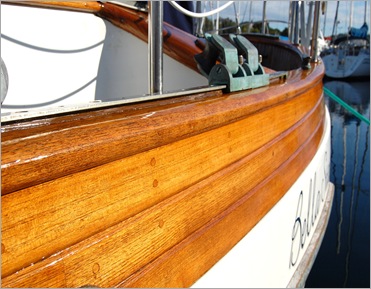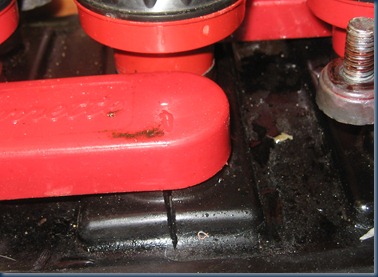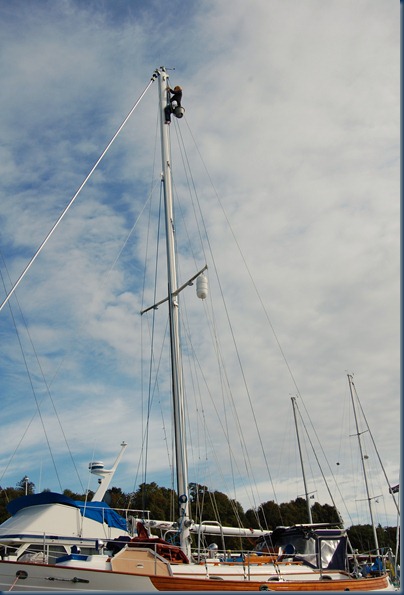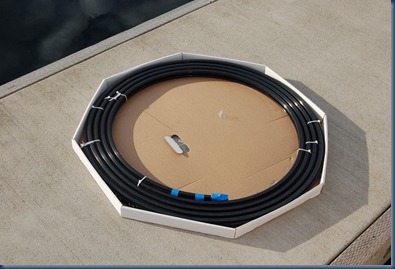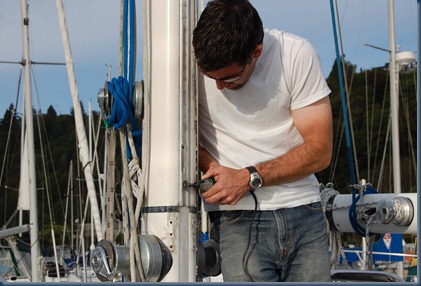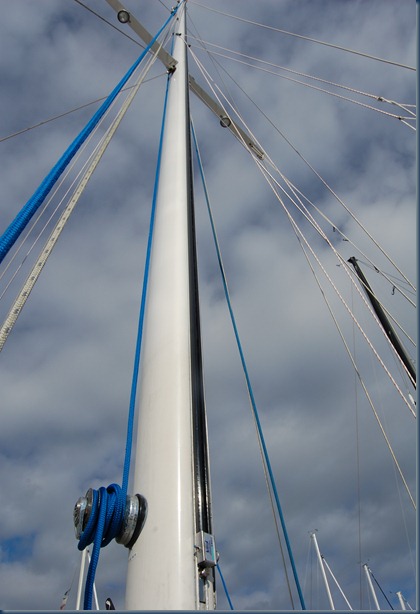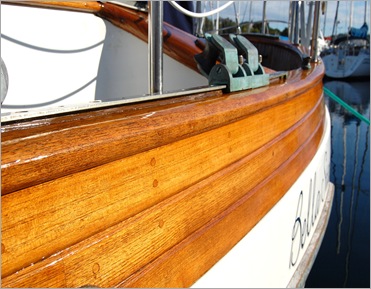 One of things that initially attracted us to Hans Christian sailboats was the beautiful woodwork. And indeed, when we purchased Bella Star, her brightwork was in good shape.
One of things that initially attracted us to Hans Christian sailboats was the beautiful woodwork. And indeed, when we purchased Bella Star, her brightwork was in good shape.
But all play and no maintenance left Bella Star’s teak longing for some attention. “We’ll do the varnish next year for sure,” we’d say. But this elusive “next year” would come and go and more varnish would peel away.
This year, however, we buckled down, rolled up our sleeves, wielded a pair of heat guns and got the job done. It was a lot of work to strip all the old, peeling varnish, sand it smooth, bleach it with oxalic acid to even out the color and lay down 8 coats; but boy, was it worth it.
When faced with the “to varnish or not to varnish” question, many people opt to eliminate the yearly varnish maintenance ritual by letting their teak age naturally or “go gray.” But for us, it wasn’t really a question. Simply put, we love the look of varnished wood. Our main objective, though, was to protect the teak—not go for a museum-quality finish.
The previous owner(s) chose to use Cetol Light, a well-respected and long-lasting product. But it isn’t our favorite, so we did some research and decided on Epifanes Wood Finish Gloss and Clear varnish (top coat). The Wood Finish Gloss was great to work with, and sanding in between coats wasn’t required (with as much wood as we have and the short Seattle summer, that just wouldn’t have been practical).
As a side note, don’t you hate it when you’ve been singing the words to a song for years and someone (Aaron) finally points out that, no, Nicole, Elton John isn’t saying “Lay me down on sheets of leather” in “Tiny Dancer.” It’s sheets of linen. LINEN. Well, I had nearly the same epiphany when I called the Epifanes customer service line. Turns out, it’s not Ep-i-fains, as we’d been pronouncing it. It’s Ep-ah-faw-nes. Who knew?
Now for some before, during and after pictures.
Before: Notice the graying wood and peeling varnish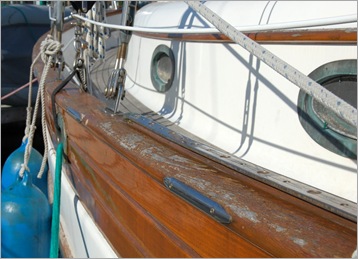
During the stripping phase: We used acres of plastic sheeting and blue tape to keep the bits from going in the water. There’s Aaron with his heat gun…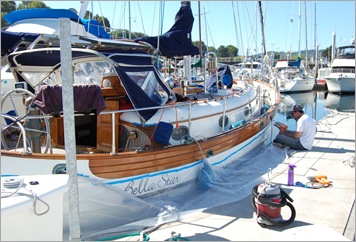
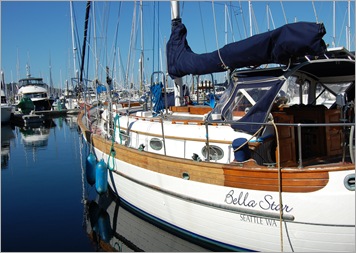
During: Sanded and bleached with oxalic acid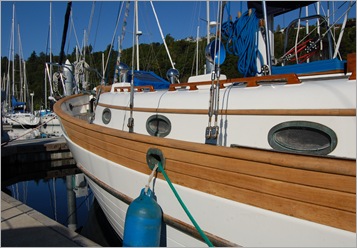
Finished! Eight coats down, with a goal of getting up to twelve next summer. Beautiful! Next up, the turtle and treasure chest, followed by the boom gallows and belaying pins. 